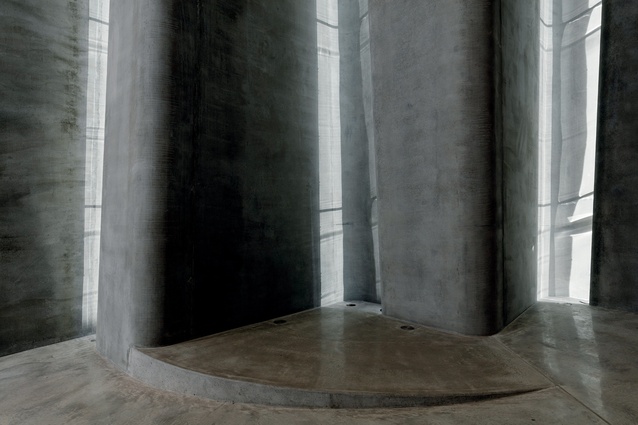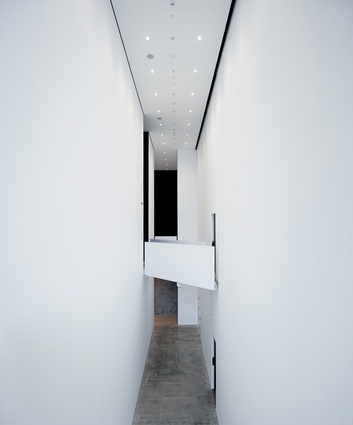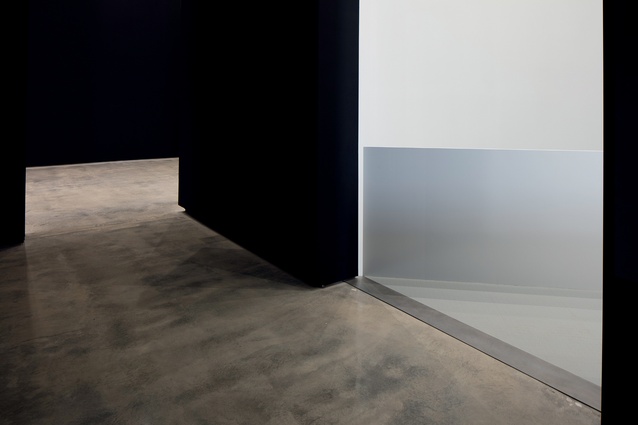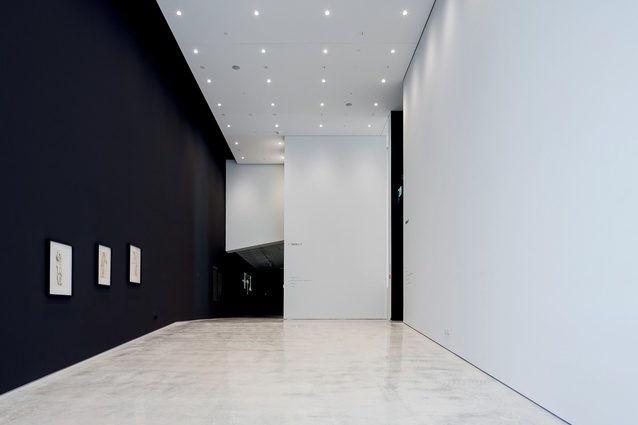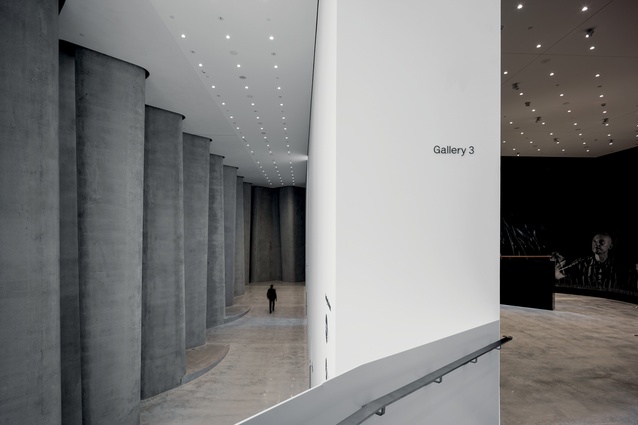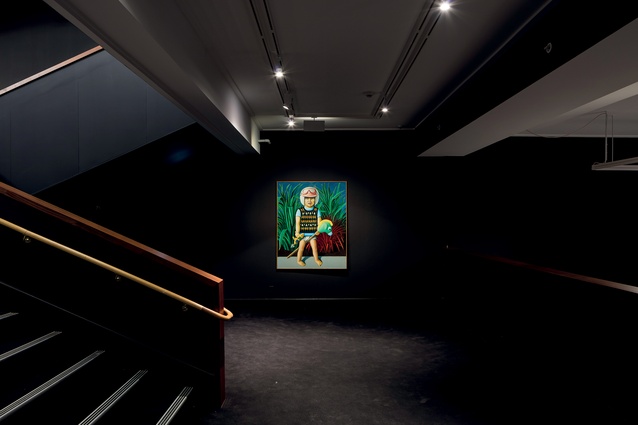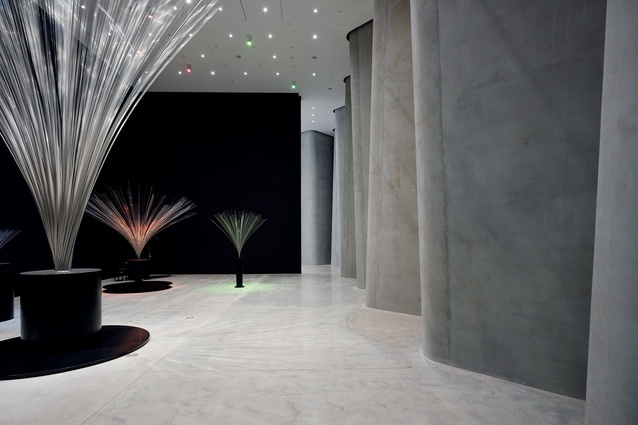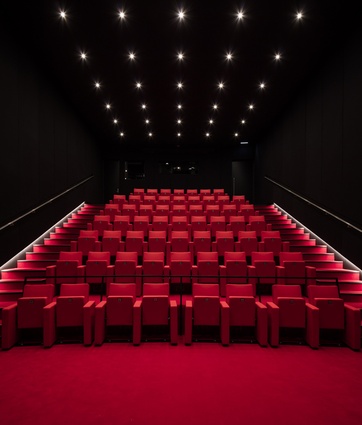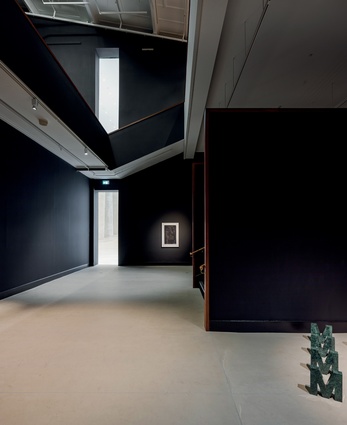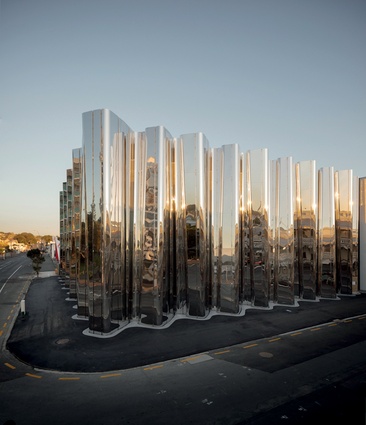Inside the Len Lye
It sounds almost oxymoronic – creating a space in which to contain and display the legacy of an artist who was known, essentially, for constant motion. While the rippled stainless-steel façade of the Len Lye Centre succeeds in capturing the dynamism of the artist’s work by virtue of the ever-changing warped reflections that play along its surface, the interior benefits by taking a completely antithetical approach.
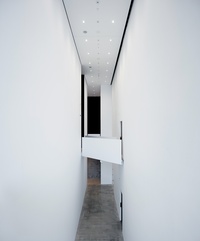
Here, Patterson Architects and Govett-Brewster Art Gallery director Simon Rees use dramatic form and material restraint to evoke a sense of anticipation, right from the beginning. A rigorously neutral palette strikes just the right note between elegant and industrial, as matt black and white walls offset the polished floors and the undulating concrete interior face of the front façade.
Viewed from this perspective, as one enters and ascends towards the main gallery spaces of the Len Lye Centre, the 10-metre-high waves of concrete appear almost like billowing folds in heavy fabric, as if one were backstage and walking towards the light and action present just on the other side of the curtain.
“I inherited this building in its construction phase,” says Rees, who returned to the Govett-Brewster after a decade in Europe. “In my interview week, I spent a day and a half with (Andrew) Patterson because, at that point, he was moving on to the interior design. So I had a lot of input in the fit-for-purpose aspect – what an art museum means and what a museum needs in order to function. This is Andrew’s first art museum but I’ve worked in an awful lot of them.”
Rees’ experience helped determine the final lighting configuration, audio systems and the cinema fit-out, in particular. Although the Len Lye Centre is dedicated to a single artist, bringing a sense of cohesion and context to Lye’s varied interests, and facilitating a holistic visitor experience, required a certain amount of spatial restriction.
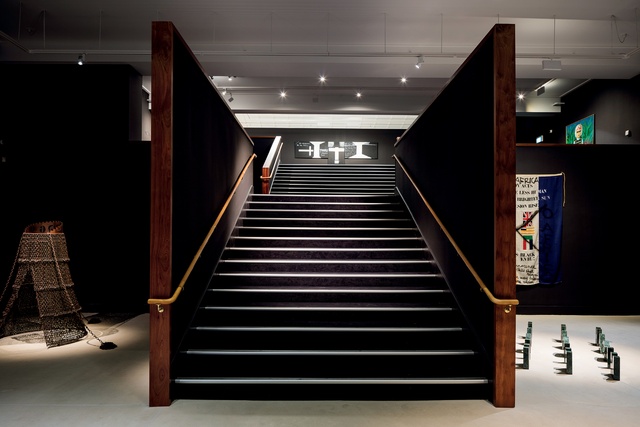
Rees explains: “We have a cinema, a large works space and a principal exhibition space. Those are three chapters, if you like, of Len Lye; three spaces is enough to enable that. It’s worth noting that the new cinema space is positioned between the Len Lye Centre and the Govett-Brewster Art Gallery – which was, originally, a movie theatre. The architecture means that cinema and film remain at the heart of the Govett-Brewster, and at the heart of the Len Lye Centre, and I think that’s quite important.”
The sheer scale of Lye’s work, particularly his kinetic sculptures, brought another level of requisite engineering to the project. Rees explains: “the large works gallery has a ceiling height at 10 metres and a motor room underneath, and that was always planned – it’s vital, to enable us to show these large works in this space.”
In the large works gallery, Len Lye: Four Fountains includes an eight-metre-tall iteration of the sculpture, built and engineered by the Len Lye Foundation in 2015, based on specifications from its extensive archive of Lye’s own notes and drawings. “The motion I am programming will be more vividly empathic when blown up in scale,” Lye wrote.
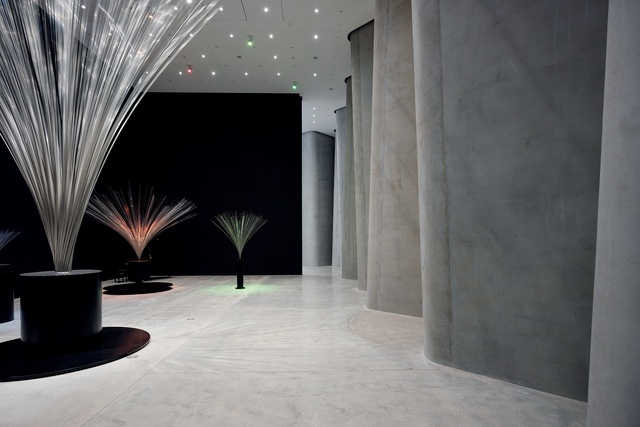
The hypnotic cadence of shadow-play along the rippled concrete as the massive, yet delicate, fronds sway under coloured light is accompanied by music from one of Lye’s favourite artists, the French composer Pierre Boulez: Le marteau sans maître (The hammer without a master, 1955).
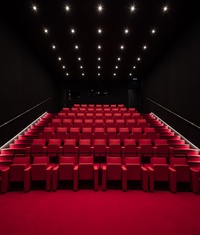
Ascending further, Revealed – a changing, ongoing pocket exhibition curated by Rees – is displayed. This pause in the journey adds context and dimension to the visitor experience by answering the question: what kind of art do other artists collect? “The Revealed exhibition is about sharing important moments in 20th-century modernism in a really subtle, but generous, way, ” says Rees. “I like to create moments like this.”
The main Lye Gallery is one of the larger single rooms for showing art in New Zealand. Rees says: “What makes this a great place is that here you get: [Lye’s] writing; the drawing; the camera-less photography; the sculpture; the painting and the moving images. And you’re able to see them together but separately. I encourage generous exhibitions with lots of space around them – so you’re allowed to move in a measured way.”
It is in facilitating stillness that Patterson Architects and Simon Rees bring this project to full realisation of its potential. “I think in our age of image saturation and information overload, having museums that are pared back, that allow physical and analytical space, is part of our mission. Not every curator or museum works in that way but I do.”

